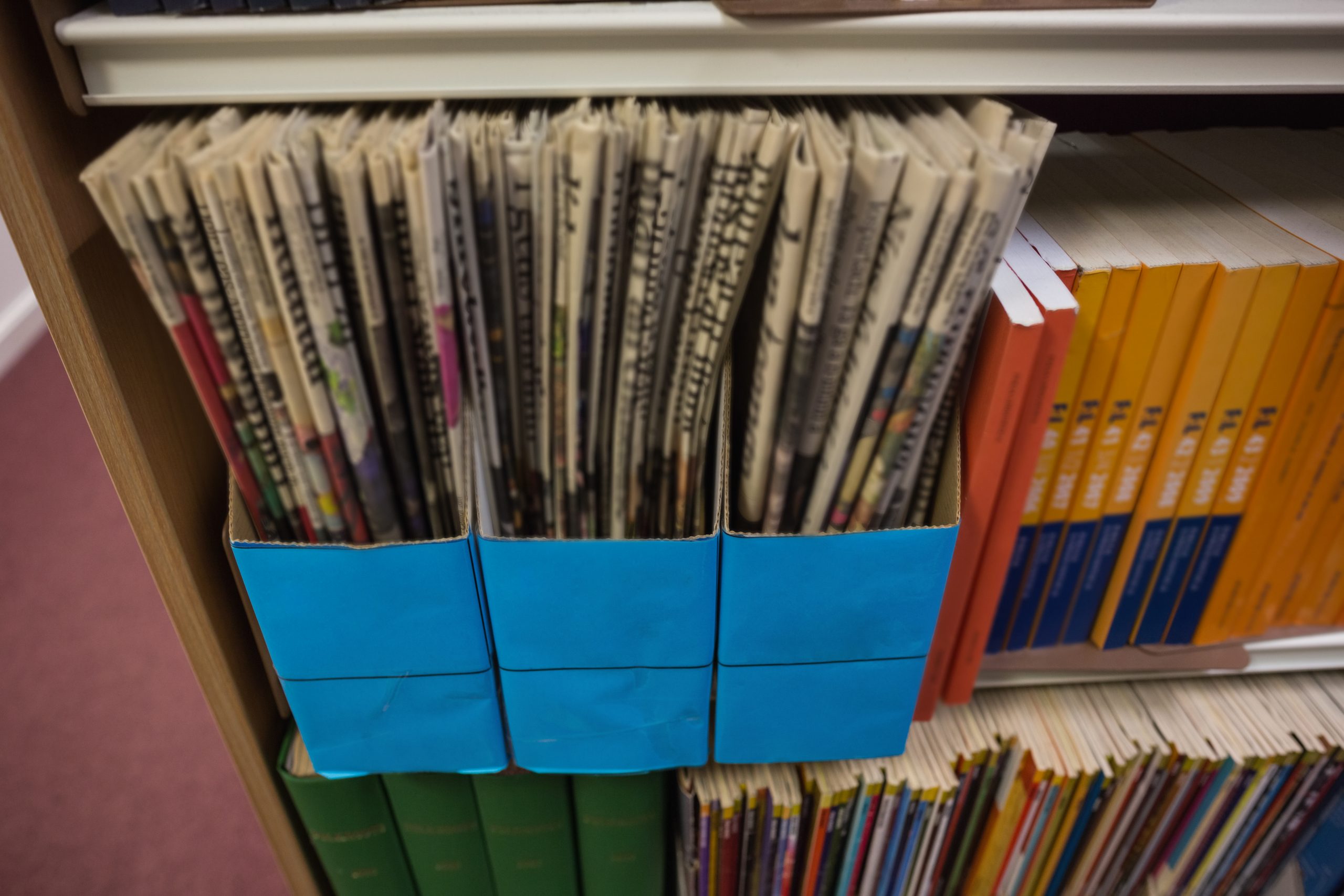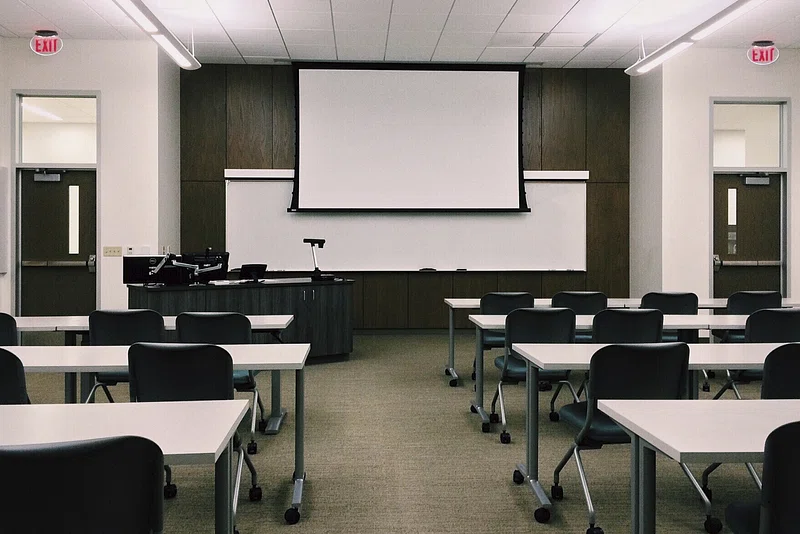In an era where we compete with digital screens for our children’s attention, keeping them engaged can at times, be a challenge. The teaching of history in elementary, middle, and high schools is challenging enough, and student engagement can be a complex puzzle to solve. Teachers strive to find ways to spark students’ interest and to make historical events, personalities, and periods come alive in ways that are engaging and meaningful. From social media platforms to immersive video games and online content, our kids are ingesting information much differently than the generations before them. They’re digital natives, fluent in the language of interactive experiences. Traditional chalk-and-talk teaching methods gradually give way to interactive, technology-infused learning environments.
At Advantage Archives, we regularly entertain the notion of modernizing history.” Our ambition is to arm educators with the resources necessary to transform screens from perceived foes into invaluable allies to pursue immersive and effective learning. Rather than adhering to traditional or more passive rote learning, utilizing digitized primary sources can serve as a potent tool that allow students to explore history through the eyes of those who witnessed it firsthand.
Community libraries serve as the custodians of community history, undertaking the noble task of preserving past records, artifacts, and narratives. However, their duty extends beyond mere preservation; they’re also committed to democratizing access to these historical treasures. By making these resources readily available, libraries create an inclusive historical dialogue that welcomes every community member, young or old, student or professional, local or visitor.
Libraries all over the United States have partnered with Advantage Archives in a commendable endeavor to digitize their collections of microfilms, local newspaper archives, and other primary resources. These invaluable resources have been made freely accessible through their Community History Archive, an online platform that breaks down the barriers to local history. This remarkable initiative opens up a practical gateway to regional history, presenting an unparalleled opportunity to weave local primary sources into classroom curriculums.
Teachers in these communities have access to a wealth of resources that were previously difficult to reach. From old newspaper clippings to preserved photographs, letters, and historical documents, the past becomes tangible, ready to be explored and understood. Students can be given a unique opportunity to interact with their local history in a way that makes the subject matter come alive, transforming them from passive learners to active historians. The historical records in the library’s collection can help frame national and international historical events and shed light on local communities’ unique narratives, enabling students to understand the past more nuancedly.
When educators tap into these resources and integrate them into their lesson plans, students can view history through the eyes of those who witnessed events firsthand, offering a more tangible and relatable understanding of history. Local newspapers, in particular, hold substantial value, capturing the nuances of local history from the perspective of the student’s community that can provide context and depth to national and international events, bridging the gap between the past and the present dynamically and engagingly.
Research over the years has shown the value of this kind of engagement with primary sources. In a landmark study, Keith Barton (2005) highlighted the benefits of using primary sources in teaching history. His research underlined the value of primary sources in promoting critical thinking and fostering information literacy skills, both vital competencies for students. Such an approach enhances students’ understanding of historical concepts and promotes “historical empathy” — the ability to understand and appreciate how people in the past responded to their historical context.
In a more recent study, Brown, DePalma, and Alva (2019) found that primary sources significantly enhanced high school students; “historical empathy”. Using original documents and artifacts in the classroom led to greater engagement and a deeper understanding of the subject. This affirms the effectiveness of resources like digitized newspapers in bringing history to life.
Moreover, online access to digitized primary sources like newspapers, correspondence, historical public records, and photos further promotes active learning and critical thinking skills, essential in today’s digital age, as the research conducted in 2020 by Amanda Callison and George Lamb suggests. Callison and Lamb’s research is an insightful study into the effects of digital primary sources on learning outcomes in high school history students. They set out to investigate the role of digitized primary resources, like historical newspapers, in promoting active learning and critical thinking and fostering digital literacy skills.
The researchers used a mixed-methods approach to collect and analyze data. This included pre-and post-tests to measure students’ knowledge acquisition and improvements in critical thinking and qualitative feedback from students and teachers on their experiences using digital primary sources. One of the study’s key findings was that students using digital primary sources demonstrated significant improvements in historical knowledge. This was evidenced by better scores on the post-test than the pre-test, suggesting that interaction with primary sources aided their understanding of the historical concepts being studied. Furthermore, students reported higher levels of engagement with the material when using digital primary sources. They appreciated being able to read history and reported feeling like detectives as they navigated through the archives. This underscores the motivational benefits of active learning strategies and aligns with other research suggesting that student engagement is closely linked to academic achievement.
The study also highlighted improvements in digital literacy skills. The ability to effectively find, evaluate, and use information from digital sources is increasingly important in the modern digital age. Through the process of navigating the digital archives, students
Callison and Lamb’s study recommended that digital primary sources can be highly effective tools in the high school history classroom. The authors suggested that teachers integrate these resources into their instruction to promote active learning, critical thinking, and digital literacy and to foster a deeper understanding of and engagement with history.
However, it’s important to note that while the results of this study are encouraging, the authors also pointed out the need for additional training for teachers and students to utilize these resources effectively. They mentioned that proper instructional guidance is necessary to ensure that students are not just passively reading the primary sources but are actively engaging with them to develop their analytical skills and construct historical understanding.
Teachers at every level of education are embracing the idea that historical newspapers offer a view into the past that textbooks often cannot. They contain first-hand accounts, editorial opinions, advertisements, and local news – painting a vivid picture of life as it was lived. Through these pages, students don’t just read about history; they witness the events and attitudes shaping their community and the world. In particular, local newspapers can add depth and relevance to historical events by connecting them to the community. This promotes a stronger sense of connection and understanding among students about how local, national, and international events are interconnected.
This new perspective is compelling because it brings history closer to students’ reality. It’s one thing to learn about World War II from a textbook, but it’s quite another to read a local newspaper from the 1940s, reporting the war news, listing local soldiers who were serving, and showing the impact of the war on everyday lives. This tangibility transforms history from abstract concepts into concrete realities. Using the historical newspapers from the student’s community offers a rich tapestry of insights into how national and international historical events impacted and informed the community at the time and allows the student to put current events in perspective with the past.
Beyond the inherent historical value, the digitized newspapers found in Community History Archives nationwide also offer logistical advantages. They can be accessed anywhere with an internet connection, allowing for flexible learning both in and out of the classroom. The digital format also allows for quick searching and filtering, making it easier for students to find relevant information. Students can explore national and international history from a local perspective from their laptop, desktop, tablet, or mobile device, creating a unique and immediate window into the past. This grants an extraordinary degree of flexibility for learning, making it possible for students to explore the past both inside the traditional classroom walls and beyond them, perhaps at home, in a local library, or even in times when remote learning is the only option (I am looking at you 2020 and 2021). This easy accessibility promotes an inclusive learning environment by eliminating physical barriers to research materials. It caters to diverse learning styles and circumstances, enabling students who might not be able to visit a physical archive due to transportation issues, personal responsibilities, or other commitments to still delve into historical research at a time and place that works for them.
The digital format of these archives significantly simplifies the research process. The ability to quickly search and filter through vast amounts of data means that students can find pertinent information without manually scouring through physical newspapers. The ability to search by keyword makes these archives more familiar and accessible for students, including those who might be initially intimidated by the prospect of conducting historical research but are accustomed to search providers like Google.
Thanks to these community partnerships, there is no cost to the educator, the school, or the student associated with using the Community History Archives. This free online access to historical newspapers allows students to gain a firsthand look at how events were interpreted and understood when they occurred. This perspective is profoundly different from traditional textbooks, which often present an overview of historical events through a modern lens. Local newspapers not only document major events but also provide a sense of the daily life of the period, its social and cultural attitudes, and local perspectives.
The digital shift in education offers significant opportunities for student engagement and active learning. Partnerships between the community’s library and educators open the door for additional opportunities for deeper collaboration. The library facilitates free access to the library’s primary sources but can also train educators and students on navigating digital archives, interpreting historical documents, and applying critical thinking to understand bias and perspective.
While the move from passive learning to one involving a more interactive teaching methodology can seem daunting to some, it opens up a world of potential for teaching and learning history. With the aid of Advantage Archives, teachers and other educators can leverage their local library’s Community History Archive platform in their strategies that promote active learning. These digital resources can help students “see” history through a local lens and provide them with a more tangible experience as they connect with history in a relevant way.
In my next post, I will further explore how teachers can use their local library’s Community History Archive platform to create immersive learning experiences and foster critical thinking, and a couple of tips on how to guide students in interpreting these primary sources, given the unique language, reporting style, and cultural context they embody.
References:
- Seixas, P. (2002). The Use of Original Sources in Teaching History. International Journal
of Historical Learning, Teaching and Research, 2(2), 22-32. - Brown, C., DePalma, E., & Alva, S. (2019). The Impact of Primary Sources on Historical
Empathy in the High School Classroom. The Social Studies, 110(5), 199-210. - Callison, D., & Lamb, A. (2020). Impact of Digital Primary Sources on Learning Outcomes:
A Study of High School History Students. The Journal of Interactive Learning Research,
31(1), 51-71.







